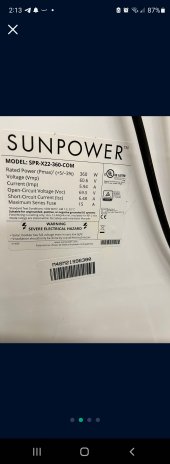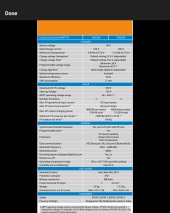sunshine_eggo
Happy Breffast!
Is there a rule of thumb on how far away from the Max PV voltage you should stay?
NEC values:

PV array temperature correction table (NEC 2017)
There are calculators like this one made by @upnorthandpersonal which help you calculate PV array voltage and power for low temperatures based on the specific specifications of your panels. These are great tools and will give more precise...
or:
Look at the record low for your area. Use the panel Voc temperature coefficient (listed in the datasheet) to compute the adjusted voltage. This value must not exceed your MPPT voltage limit.
If the panel doesn't publish it, a conservative value is -0.4%/°C from 25°C, e.g., if it's 0°C, your panel voltage would increase by (0 - 25) * -0.4% = +10%. Thus if your panel Voc is 50V @ 25°C, it will be 55V @ 0°C.
Last edited:





